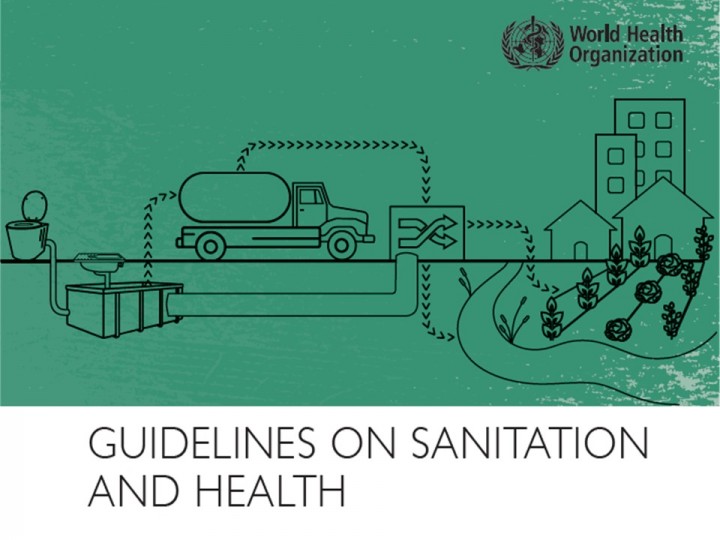
Published in: 2018
Pages: 198
Publisher:
Geneva: World Health Organization; 2018. Licence: CC BY-NC-SA 3.0 IGO. ISBN 978-92-4-151470-5
Author:
WHO
Uploaded by:
SuSanA Admin
Partner profile:
common upload
8339 Views
645 Downloads
Safe sanitation is essential for health, from preventing infection to improving and maintaining mental and social well-being. The lack of safe sanitation contributes to diarrhoea, a major public health concern and a leading cause of disease and death among children under five years in low- and middle- income countries; poor sanitation also contributes to several neglected tropical diseases, as well as broader adverse outcomes such as undernutrition. Lack of access to suitable sanitation facilities is also a major cause of risks and anxiety, especially for women and girls. For all these reasons, sanitation that prevents disease and ensures privacy and dignity has been recognized as a basic human right.
Sanitation is defined as access to and use of facilities and services for the safe disposal of human urine and faeces. A safe sanitation system is a system designed and used to separate human excreta from human contact at all steps of the sanitation service chain from toilet capture and containment through emptying, transport, treatment (in-situ or offsite) and final disposal or end use. Safe sanitation systems must meet these requirements in a manner consistent with human rights, while also addressing co-disposal of greywater, associated hygiene practices and essential services required for the functioning of technologies.
The purpose of these guidelines is to promote safe sanitation systems and practices in order to promote health. They summarize the evidence on the links between sanitation and health, provide evidence-informed recommendations, and offer guidance for encouraging international, national and local sanitation policies and actions that protect public health. The guidelines also seek to articulate and support the role of health and other actors in sanitation policy and programming to help ensure that health risks are identified and managed effectively.
The main audience for the guidelines is national and local authorities responsible for the safety of sanitation systems and services, including policy makers, planners, implementers and those responsible for the development, implementation and monitoring of standards and regulations. This includes health authorities and, since sanitation is often managed outside the health sector, other agencies with responsibilities for sanitation. The guidelines were developed in accordance with the processes set out in the WHO Handbook for Guideline Development.
Bibliographic information
WHO (2018). Guidelines on Sanitation and Health. Geneva: World Health Organization; 2018. Licence: CC BY-NC-SA 3.0 IGO. ISBN 978-92-4-151470-5
Filter tags
Behaviour change (WG13) English Guidelines and manuals Politicians and local decision makers Recommended by SuSanA (other than SuSanA publications)















